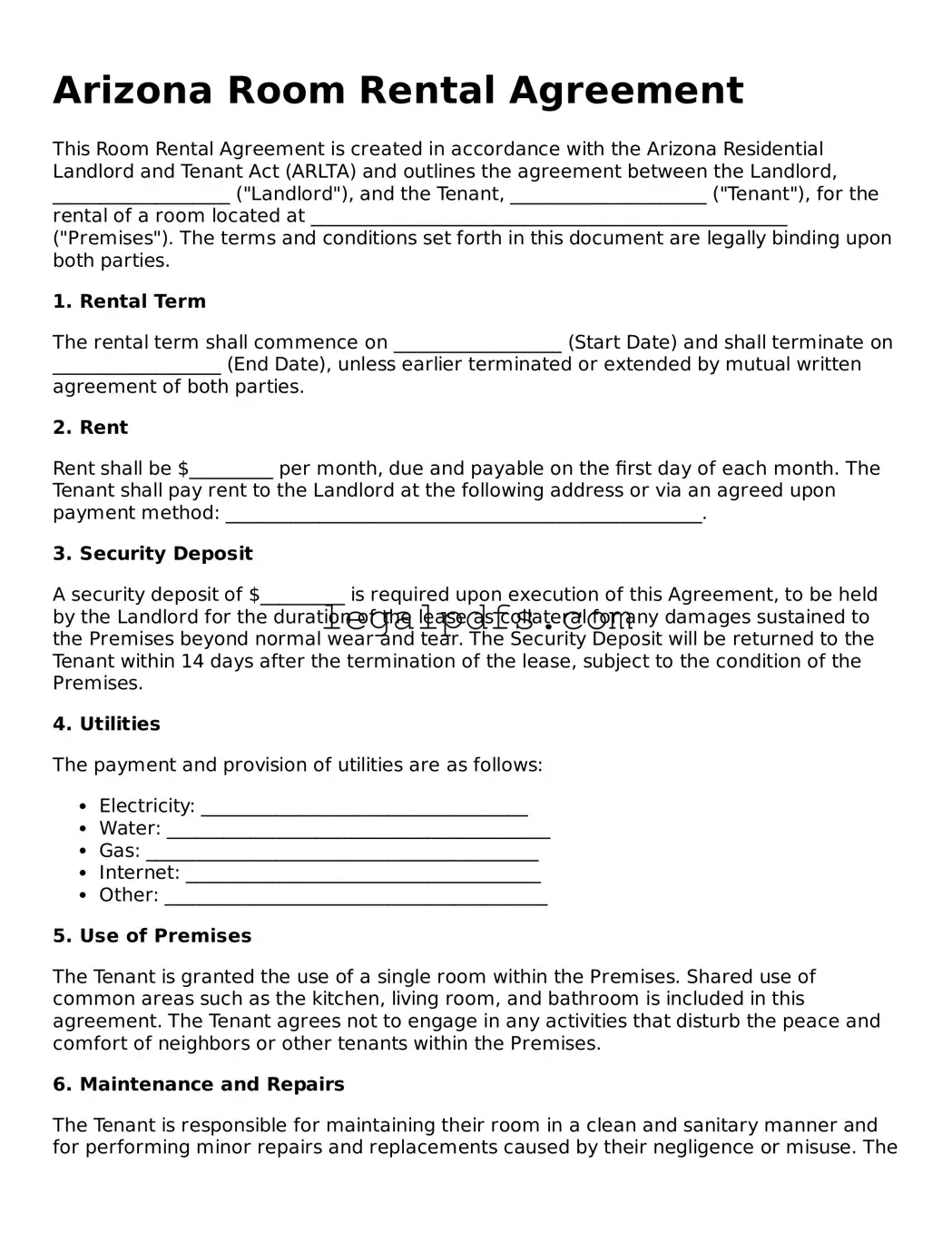What is the Arizona Room Rental Agreement form?
The Arizona Room Rental Agreement form is a document used by landlords and individuals renting out rooms in their property to establish a formal rental relationship. It sets the terms and conditions under which a tenant can rent a room in Arizona, including rent amount, utility payments, and rules for use of common areas.
Do I need a Room Rental Agreement if I am renting a room to a friend or family member?
Yes, it is highly recommended. Having a Room Rental Agreement in place, even when renting to someone you know, helps clarify expectations and responsibilities for both parties, reducing the potential for misunderstandings or disputes.
What information do I need to complete the Arizona Room Rental Agreement?
You will need details such as the names and contact information of the landlord and tenant, the address of the property, rental amount, security deposit, payment dates, and any specific rules or conditions related to the use of the property and common areas.
How long can a room rental agreement last in Arizona?
Room rental agreements in Arizona can be set for any length of time, but typically they are either month-to-month or for a fixed term, such as six months or one year. It's important to specify the duration in the agreement.
Can the rent amount be changed during the lease period?
Generally, the rent amount specified in the room rental agreement cannot be changed during the lease term unless both parties agree to the change in writing. For month-to-month agreements, landlords must give tenants a 30-day notice before changing the rent.
Is a security deposit required, and how is it handled?
Whether a security deposit is required is up to the landlord, but it is common practice. Arizona law requires landlords to return the security deposit, minus any amounts legally deducted for damages or unpaid rent, within 14 days after the tenant moves out.
What happens if the tenant breaks the lease early?
If a tenant breaks the lease early, they may be responsible for the remainder of the rent due under the agreement. However, Arizona law obligates landlords to make a good-faith effort to re-rent the room to mitigate damages.
Can the landlord enter the rented room without notice?
No. In Arizona, landlords must provide reasonable notice, typically at least 48 hours, before entering the rented room, unless in cases of emergency or if it's specified differently in the agreement.
Are there any specific rules regarding eviction?
Yes, Arizona has specific rules that must be followed for an eviction to occur, including providing proper notice and the reason for eviction. Reasons can include nonpayment of rent and violation of the agreement terms. Eviction must be carried out through a court process.
Where can I find a template for the Arizona Room Rental Agreement form?
Templates for an Arizona Room Rental Agreement form can usually be found online through legal services websites, real estate organizations, or local housing authorities. Ensure any template you use complies with Arizona law.
